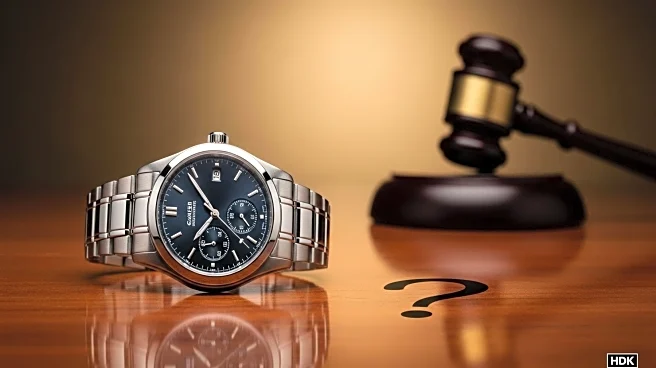What is the story about?
What's Happening?
Luxury watch brands, including Audemars Piguet and Hublot, are navigating a challenging market landscape as the United States imposes a 39% tariff on Swiss watches. This development comes as the U.S. surpasses China as the largest market for luxury watches, driven by China's economic downturn. In response, brands have been quietly increasing prices and rushing shipments to the U.S. to mitigate the impact of the tariffs. The situation is further complicated by rumors of a potential 15% price increase by Patek Philippe. Despite these economic pressures, the watch industry continues to innovate, with Audemars Piguet unveiling six new timepieces to celebrate its 150th anniversary, and other brands like Breguet and Hublot launching limited edition models.
Why It's Important?
The imposition of tariffs on Swiss watches by the U.S. government has significant implications for the luxury watch industry. As the U.S. becomes the largest market for these high-end timepieces, brands are forced to adapt their pricing strategies, potentially leading to higher costs for consumers. This shift underscores the broader economic tensions between the U.S. and other global markets, particularly in the luxury goods sector. The situation highlights the vulnerability of international trade to geopolitical factors and the need for brands to navigate these complexities to maintain their market positions. The ongoing innovation in watch design and technology also reflects the industry's resilience and commitment to artistry despite economic challenges.
What's Next?
As the U.S. tariffs on Swiss watches remain in place, luxury watch brands may continue to adjust their pricing strategies, potentially leading to further price increases. The industry will likely monitor consumer reactions and sales trends closely to gauge the impact of these changes. Additionally, brands may explore alternative markets or strategies to offset the financial pressures caused by the tariffs. The ongoing economic dynamics between the U.S. and China could also influence future market developments, with potential shifts in consumer demand and brand strategies. Stakeholders in the luxury watch industry will need to remain agile and responsive to these evolving conditions.
Beyond the Headlines
The current situation in the luxury watch market highlights broader themes of globalization and economic interdependence. The imposition of tariffs and the resulting market shifts illustrate the complex interplay between international trade policies and consumer markets. This scenario also raises questions about the sustainability of luxury goods pricing models in the face of geopolitical tensions. Furthermore, the industry's focus on innovation and craftsmanship amidst economic challenges underscores the enduring appeal of luxury watches as symbols of status and artistry. These developments may prompt a reevaluation of brand strategies and consumer engagement in the luxury sector.
AI Generated Content
Do you find this article useful?














